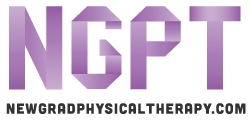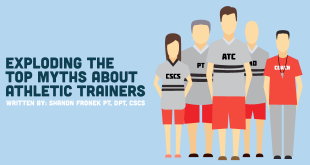The recent debate on dry needling at this year’s Combined Sections Meeting has highlighted a pernicious trend in the physical therapy profession.
Contrary to efforts aiming to bring our profession onto solid scientific ground, a growing cohort has adopted dry needling as a treatment of choice, without the appropriate amount of vetting it should have to go through.
The level of support dry needling has received is simply not proportional to the evidence in favor of it. The responses to this charge on social media have been varied; defenders say there is evidence available to support its use, some say the evidence is emerging, and some say that the evidence, and science in general, doesn’t matter.
And, despite a dearth of scientific support, many are physical therapists are fighting for the right to practice dry needling.
Positioning dry needling as a treatment that physical therapists should perform poses a few problems, but we will discuss those a bit later.
Dry needling: the evidence
What does the evidence say? To be good scientists, we ought to follow the data and make conclusions after, not the other way around. Dry needling seems to be a good candidate for a placebo treatment; it has a somewhat plausible and scientific-sounding mechanism, it can help with any problem you might see a physical therapist for (see any of the big dry needling course websites), and the thing we are treating is largely subjective and influenced by many specific and non-specific factors (pain).
The most rigorous study I have come across was performed by Sterling et.al. in 2015, and published in the journal PAIN. The authors compared dry needling and exercise to sham dry needling and exercise for patients with chronic whiplash-associated disorders (WAD). Participants were blinded, they actually assessed if blinding was a success (it was), and outcome assessors were blinded. After the completion of the study, they found that both groups had improved outcomes, and for the neck disability index, pain-pressure threshold, pain catastrophizing scale and cold pain threshold, there were statistically significant effects in favor of dry needling.
However, and this is an important however, these effects were small, not sustained, and not clinically relevant. Additionally, for every other outcome they assessed, including cervical spine active range of motion, there were no differences. The authors rightly conclude: “In patients with chronic WAD, dry-needling and exercise has no clinically worthwhile effects over sham dry-needling and exercise” (Sterling, 2015).
Now, I know there are other studies that show that dry needling can relieve pain, but they have their caveats. They are underpowered, participants are not blinded, assessors are not blinded, the placebo is poorly designed and not comparable, the study design is poor, the conclusions are overstated… the list goes on. Now, science is our friend here, and we have a way of assessing multiple trials to see if there is an effect that we are not quite capturing. Let’s look at some of the systematic reviews and meta-analyses that have come out, in rapid-fire fashion.
Effectiveness of dry needling on reducing pain intensity in patients with myofascial pain syndrome: a Meta-analysis (Rodriguez-Mansilla et.al., 2016)
“Despite DN was more effective in decreasing pain comparing to no treatment, it was not significantly different from placebo in decreasing pain. Other treatments were more effective than DN on decreasing pain after 3-4 weeks. In increasing ROM DN was more effective comparing to placebo, but less than other treatments”
“Therefore, despite clinical practice showing that DN is increasingly used nowadays and that this technique is being applied with positive effects in rehabilitation medicine, especially for the management of MPS, we can observe that the scientific evidence observed in the studies analysed do not have consistent results regarding its effectiveness”
Acupuncture and dry needling in the management of myofascial trigger point pain: A systematic review and meta-analysis of randomised controlled trials (Tough et.al., 2009)
“There is limited evidence, deriving from one study that deep needling directly into myofascial trigger points has an overall treatment effect when compared with standardised care. Whilst the result of the meta-analysis of needling compared with placebo controls does not attain statistically significant, the overall direction could be compatible with a treatment effect of dry needling on myofascial trigger point pain”
Effectiveness of Dry Needling for Upper-Quarter Myofascial Pain: A Systematic Review and Meta-analysis (Kietrys, et.al., 2013)
“The limited number of studies performed to date, combined with methodological flaws in many of the studies, prompts caution in interpreting the results of the meta-analyses performed here”
Here is one last paper from the Canadian Agency for Drugs and Technologies in Health that sums up fifteen reviews.
Dry Needling and Injection for Musculoskeletal and Joint Disorders: A Review of the Clinical Effectiveness, Cost-Effectiveness, and Guidelines (2016)
“The higher quality systematic reviews generally found that dry needling had similar or worse outcomes compared to comparator interventions.”
“Despite the number of systematic reviews on dry needling, evidence to show that it is an effective intervention is still lacking. Most of the systematic reviews, even those with conclusions that favoured dry needling, noted that current evidence is inadequate and better quality trials, with standardized interventions are needed to determine whether there is value in this procedure.”
“Some systematic reviews overstated their conclusions which can be common in study reports of pain treatments. Actual results were down-played, while more positive terms, such as “trending towards” and “potentially significant” were used in the abstracts and conclusions.”
The results from the actual literature seem at odds with the general sentiment about dry needling, especially when looking at the claims from the most popular continuing education companies on the subject.
And even if it was shown to be effective in these trials, we still don’t know how it works.
Dry needling: how does it even work?
Even the researchers seem to have trouble explaining it.
Furlan et.al. 2005: It is still unclear what exact mechanisms underlying the action of acupuncture or dry-needling.
Kietrys et.al. 2013: The actual mechanism of effect of dry needling is still being debated.
Boyles et.al. 2015: Several hypotheses exist to explain the physiological drivers behind sign and symptom reduction with TDN [trigger point dry needling].
Still more problems with dry needling research
The other consideration we have to make is that dry needling is essentially acupuncture by another name. Yes, I think the acupuncturists are right on this one.
I will grant you that there are different treatment philosophies and maybe some variance with techniques. I will grant you that there is at least an attempt to bring dry needling into the 21st century and base it on something consistent with modern medicine.
The problem is that trying to assert that acupuncture and dry needling are distinctly different is silly. If they are not the same thing, they are at least close enough that the literature regarding one can apply to the other. Both groups stick needles into people, regardless of what the practitioner thinks he or she is doing.
And, like the literature for dry needling, the literature for acupuncture is less than convincing. According to David Colquhoun, acupuncture is nothing more than theatrical placebo. He says, “The best controlled studies show a clear pattern, with acupuncture, the outcome does not depend on needle location, or even needle insertion. Since these variables are those that define acupuncture, the only sensible conclusion is that acupuncture does not work. Everything else is the expected noise of clinical trials, and this noise seems particularly high with acupuncture research. The most parsimonious conclusion is that with acupuncture there is no signal, only noise.”
There is one final problem for dry needling that we ought to consider, and this might be the most important problem.
We need to empower our patients with active treatments that are individualized and meaningful. Dry needling is another treatment where the patient lies on the table and waits for the therapist to “fix” them. I don’t think this is the direction we ought to be going.
The evidence suggests that dry needling can provide pain relief, but not much more than a credible placebo, and not enough to make clinically meaningful changes.
Now to anticipate the inevitable pushback: Yes, patient preferences and and clinical experience matter. I am sure that many of you know a therapist or two who achieve amazing results, or there are patients that have really loved it. But there are reasons why we shouldn’t be doing craniosacral therapy or prescribing homeopathy pills either, despite people having “success” with them.
The science is simply not there yet for me to jump on board. And even if it does get there, are we really the best healthcare providers to do it? It seems that acupuncturists are in a better position to utilize this and bring their profession up to speed. We ought to extend an olive branch to the acupuncturists and let them have this one. Let’s stick to what we do best: educate our patients about their condition, provide psychological and intellectual support, and design science-based exercise programs that help them get back to what they want to do.
The event horizon is coming towards us, and I hope we can just steer clear.
References:
Boyles, R., et.al. (2015) Effectiveness of trigger point dry needling for multiple body regions: a systematic review. Journal of Manual and Manipulative Therapy, Volume 23, Number 5
Colquhoun, D., et.al. (2013) Acupuncture is Theatrical Placebo. Anesthesia and Analgesia, Volume 116, Issue 6
Dry Needling and Injection for Musculoskeletal and Joint Disorders: A Review of the Clinical Effectiveness, Cost-Effectiveness, and Guidelines (2016). Canadian Agency for Drugs and Technologies in Health Rapid Response Report: Summary With Critical Appraisal
Furlan, A, et.al. (2005) Acupuncture And Dry Needling For Low Back Pain: An Updated Systematic Review Within The Framework of The Cochrane Collaboration. SPINE, Volume 30, Number 8
Kietrys, D.M., et.al. (2013) Effectiveness of Dry Needling for Upper-Quarter Myofascial Pain: A Systematic Review and Meta-analysis. Journal of Orthopaedic and Sports Physical Therapy, Volume 43, Number 9
Sterling, M, et.al. (2015) Dry-needling and exercise for chronic whiplash-associated disorders: a randomized single-blind placebo controlled trial. PAIN, Volume 156, Number 4
Tough, E.A., et.al. (2009) Acupuncture and dry needling in the management of myofascial trigger point pain: A systematic review and meta-analysis of randomized controlled trials. European Journal of Pain, Volume 13
 NewGradPhysicalTherapy.com The Largest Online Resource For New Grad Physical Therapists
NewGradPhysicalTherapy.com The Largest Online Resource For New Grad Physical Therapists








While I don’t disagree with your article here. I would ask you to provide one single intervention that we do that has a plausible placebo to administer like DN does (sham acupuncture research at least pokes people and makes them think they were needled) which shows dramatically better outcomes for pain in a placebo controlled trial. You can’t placebo manip, mobilize, exercise, or educate someone very well or at all. I agree that the foundation of literature for needling is pretty bad, but it has at least been studied to a far greater degree than several interventions that we accept and tout vehemently without missing a beat.
Thanks
Jarod
I would agree that needing a placebo controlled trial for every intervention we do would be too strong of a demand, but when we can do it, we should. But the purpose of doing these sorts of trials is to assess if something specific is making the change or is it some other factor i.e. therapuetic ritual, patient-therapist interaction, general non-harmful sensory input etc. Physical therapy does have that problem, but we need some way to assess why what we do does or doesn’t work. Thanks for reading!